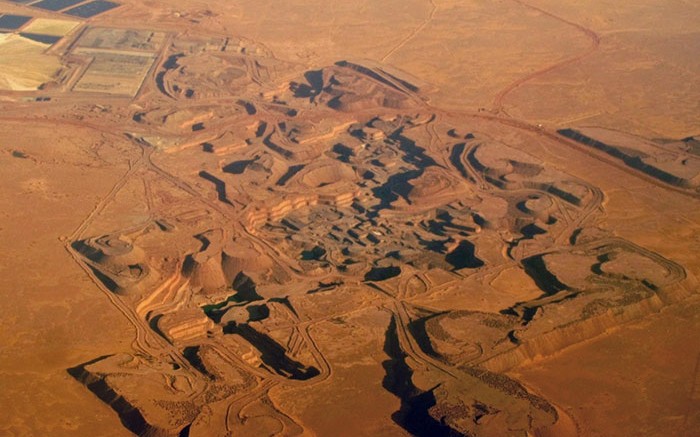GoviEx Uranium (CSE: GXU) is quietly advancing its large Madaouela uranium project, and expects to receive a mining permit by year-end, or early 2016.
The junior’s flagship project sits in the prolific Arlit uranium mining district of northern Niger, 10 to 15 km from Areva’s operating Somair and Cominak uranium mines. The mines have operated for over 40 years and produce 7% of the world’s uranium supply, making Niger the fourth-largest uranium-producing country.
Since GoviEx started drilling Madaouela in 2008, it has completed more than 600,000 metres. “We have drilled the hell out of it,” GoviEx CEO Daniel Major said in a recent presentation in Toronto, adding there’s still a lot to explore.
To conserve capital, the company turned the drills off in June 2013, a year before it listed on the Canadian Securities Exchange. “We basically said: ‘That’s enough. We have gone over a hundred million pounds. We have infill drilled … until the mine is built, it’s big enough,’” Major said.
In March 2015, the junior finished its environmental and social impact assessment, and expects approval soon. In April, it released an updated resource estimate for the Marianne and Marilyn deposits (the project’s other mining areas include Miriam, MSNE and Maryvonne).
Marianne and Marilyn now make up half of Madaouela’s total resource of 108 million lb. uranium oxide (U3O8) in measured and indicated, and 28 million lb. U3O8 in inferred.
The junior will apply for a mining permit soon. Meanwhile it’s optimizing the project’s 2013 integrated development plan, or prefeasibility study. Based on “probable reserves” of 54.9 million lb. from 25.3 million tonnes at 0.098% U3O8, Madaouela could produce 2.5 million lb. U3O8 annually over an 18-year mine life, with 83% uranium recovery. Estimated cash costs are US$26.39 per lb., excluding royalties, or US$33.10 per lb., with royalties.
While the firm would mine an average 0.1% U3O8 grade, Major says the leach feed grade will be higher, as the company would use a radiometric sorter, among other things, to separate the ore.
“The trick is that we apply some technology … our actual feed grade into our leach tanks is 0.5%. We basically go from a 4,000-tonne-a-day mine to 800 tonnes a day, which goes into our leach tanks, with 97% of the uranium still contained,” he said.
Initial costs to get the project up and running is US$340 million, with total capital estimated at US$646 million. GoviEx is waiting to receive the mining permit before lining up a mix of debt and equity.
Given the company’s strong shareholder base, financing shouldn’t be a problem. Its largest shareholders include: chairman Govind Friedland (Robert Friedland’s son) with 21.3%; Toshiba Corp., the owner of nuclear technology firm Westinghouse, at 19.4%; and Canada’s largest uranium producer Cameco (TSX: CCO; NYSE: CCJ) at 8.5%.
However, the Madaouela project needs a higher uranium price than the current spot price of US$36.50 per lb. U3O8 to work.
Using a US$65 per lb. price and an 8% discount rate, the prefeasibility study estimates an after-tax net present value of US$184 million and an 18.5% internal rate of return. To break even, Madaouela would need a US$50.50 per lb. U3O8 price.
While Major says he’s “not going to be a screaming bull” on near-term prices — he predicts uranium will trade at US$45 per lb. in 2016 — he does foresee a major supply deficit in the market after 2020 that will significantly lift prices.
Uranium demand could rise on the back of growing Chinese demand for reactors, the restart of Japanese reactors and India’s appetite to increase its nuclear capacity, Major argues. China intends to expand its reactor count from 21 in 2014 to 132 in 2030. While the restart of reactors in Japan has been slow, the country still targets 10% nuclear energy in its long-term power mix.
If all goes to plan, GoviEx could start production at Madaouela in late 2018 or early 2019, just in time for the uranium price to recover and reach the long-term consensus of US$70 per lb.
GoviEx closed at 13¢ per share. It ended the March quarter with US$2.2 million in cash.


Be the first to comment on "GoviEx pushes Madaouela on the permitting front"